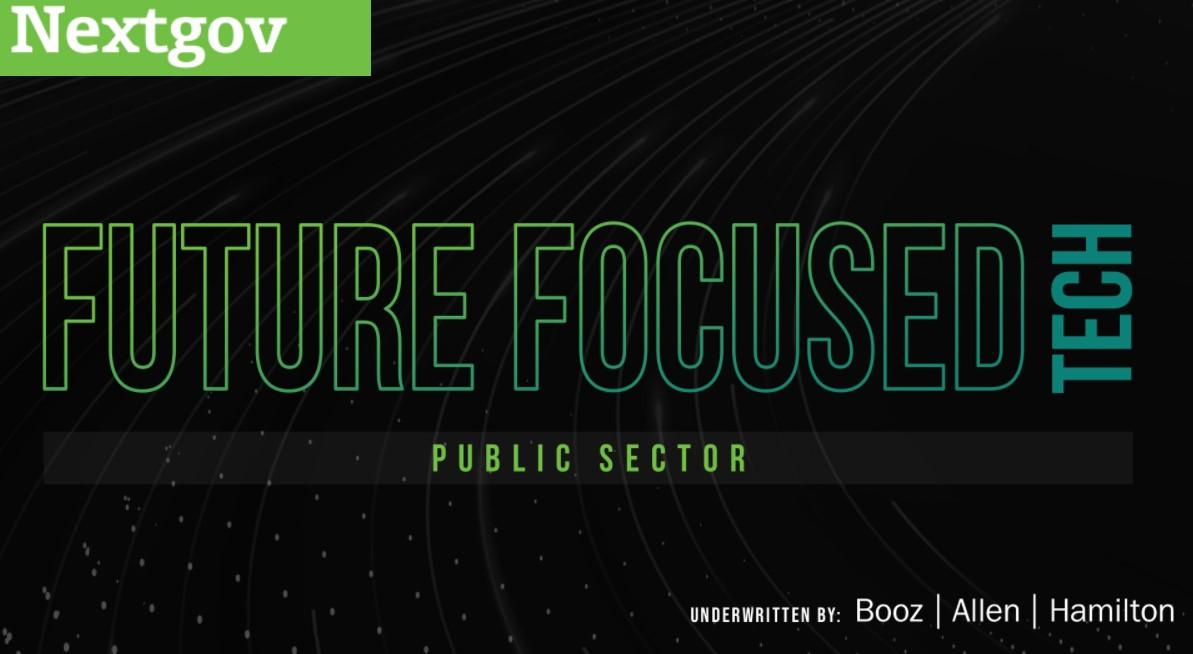How to Future-Proof Public Sector Operations: Booz Allen Brings IT Leaders Together for Insights and Advice

"This isn’t about crystal balls. It is about seeing the inevitably of major capabilities that will be available two or three decades out, and how you should act today to be in position to make the best use of these fantastic building blocks of the future to advance your mission."
-Booz Allen Vice President Tim Andrews
Leaders from federal agencies, the private sector—including Booz Allen Vice President Tim Andrews—and academia came together recently to discuss the innovative ideas and technologies changing the world today—as well as ways government organizations can put these technologies to work to modernize their operations.
Highlights follow from “Future Focused Tech: Public Sector,” a recent Nextgov virtual event and part of a series underwritten by Booz Allen.
Advancing innovation in public health
Over the past year, modernized infrastructure and collaboration platforms have been game-changers in public health, according to Jeff Schlegelmilch, director of the National Center for Disaster Preparedness at The Earth Institute at Columbia University.
The need for collaboration and integration will increase as new technologies like telehealth and contact tracing take root, he said—as will a heightened focus on broadband availability, data privacy, and consistent funding for public health efforts.
One big concern: Figuring out how to integrate new innovations with existing systems for the next five to 10 years. Technology, according to panelists, works best when it’s an extension of existing capabilities—turning successes in the lab into solutions that improve people’s lives and livelihoods.
Strengthening humanitarian response
Humanitarian response efforts led by the Defense Intelligence Agency (DIA) hinge on accurate data and information. They deliver vital views of disaster areas, potential landing strips, and places to air-drop supplies, said Mac Townsend, DIA technical director for architecture and engineering.
Once you have data from disaster sites, you need to parse and analyze it for meaning. Here’s where Townsend sees natural language processing and computer vision continuing to play a role—sharpening the identification of images and accelerating analysis through automating manual work.
Finally, since many disaster areas are far away from modern 5G connectivity and the cloud, these capabilities will need to take place at the edge, which expands the cloud and decentralizes data processing; it’s supported by the ability to containerize algorithms for rapid and widespread deployment.
The value of flexibility and cooperation
Buy-in from senior executives and collaboration with the private sector should be top priorities for organizations moving their operations to the cloud, said co-panelist and GAO Acting Director of Information Technology and Cybersecurity David Hinchman.
There’s no one-size-fits-all solution across agencies and myriad sub-agencies, Hinchman said. He suggested that federal IT teams adopt a flexible, cooperative, participatory approach that is “more collaboration than dictation.”
“Think big. Start small. Learn fast.”
For successfully integrating new innovations and future-proofing their operations, Booz Allen’s Tim Andrews’ guidance to agencies is “Think big, start small, and learn fast.”
- To identify what’s next, look to research labs and major corporations for and for technologies that are developing exponentially with the potential to make a broad impact. Examples include recent advances in sensors, AI, and computing.
- To translate these innovations into projects you can work on today, imagine a world 30 years from now based on these technologies. What does this “future history” look like?
- To get started, begin with small experiments that promote learning and create options.
“Adjust your pace as you go,” he advised. “Invest too much too early and you'll create white elephants. Underinvest and you'll end up with legacy capabilities that inhibit modernizing your mission.”
“What's important is to be headed in the right direction—in a small way in the early stages—both to promote learning quickly and to enable the ability to plot your next steps,” he said.
Learn more about how Booz Allen supports the public sector and watch the full event recording.

